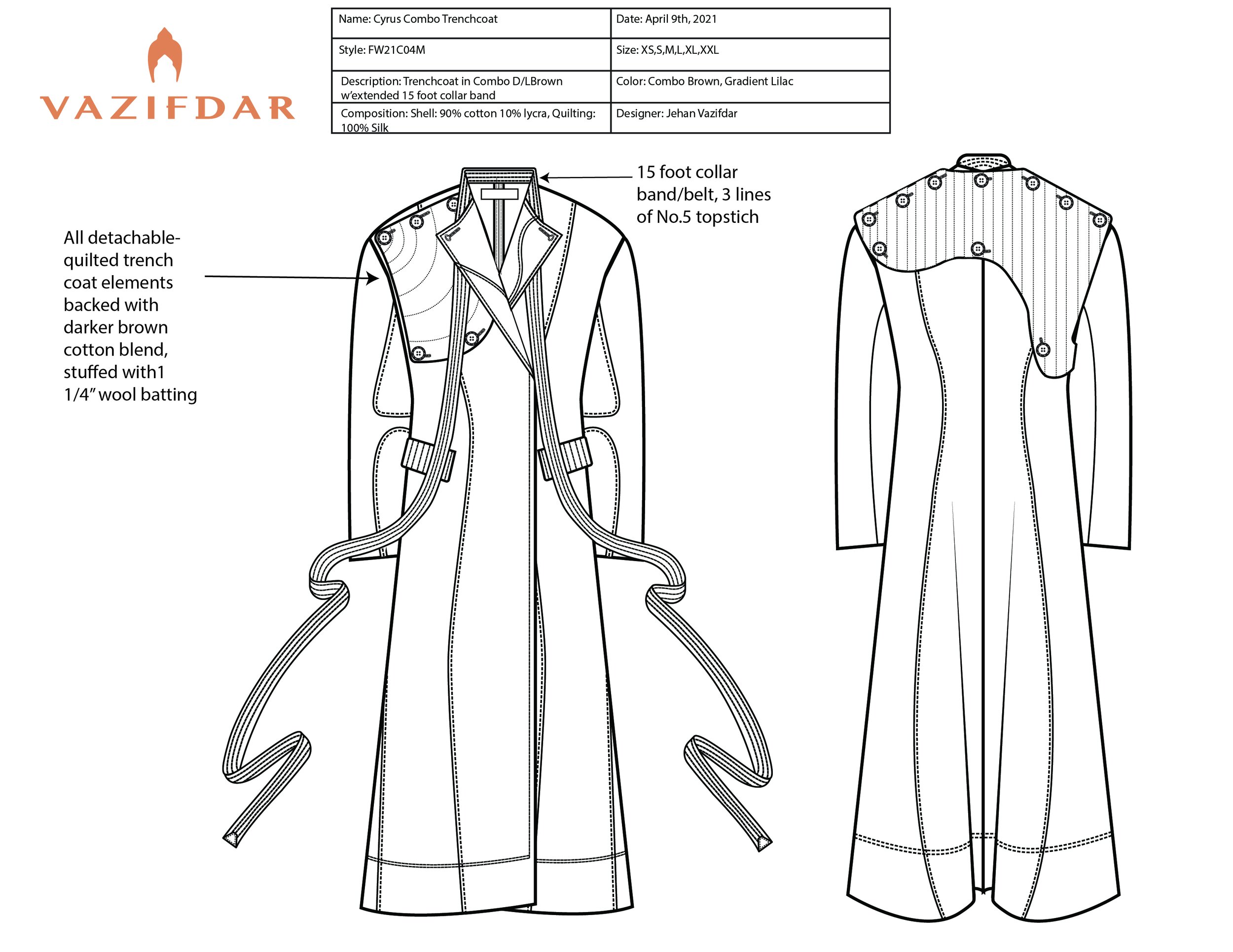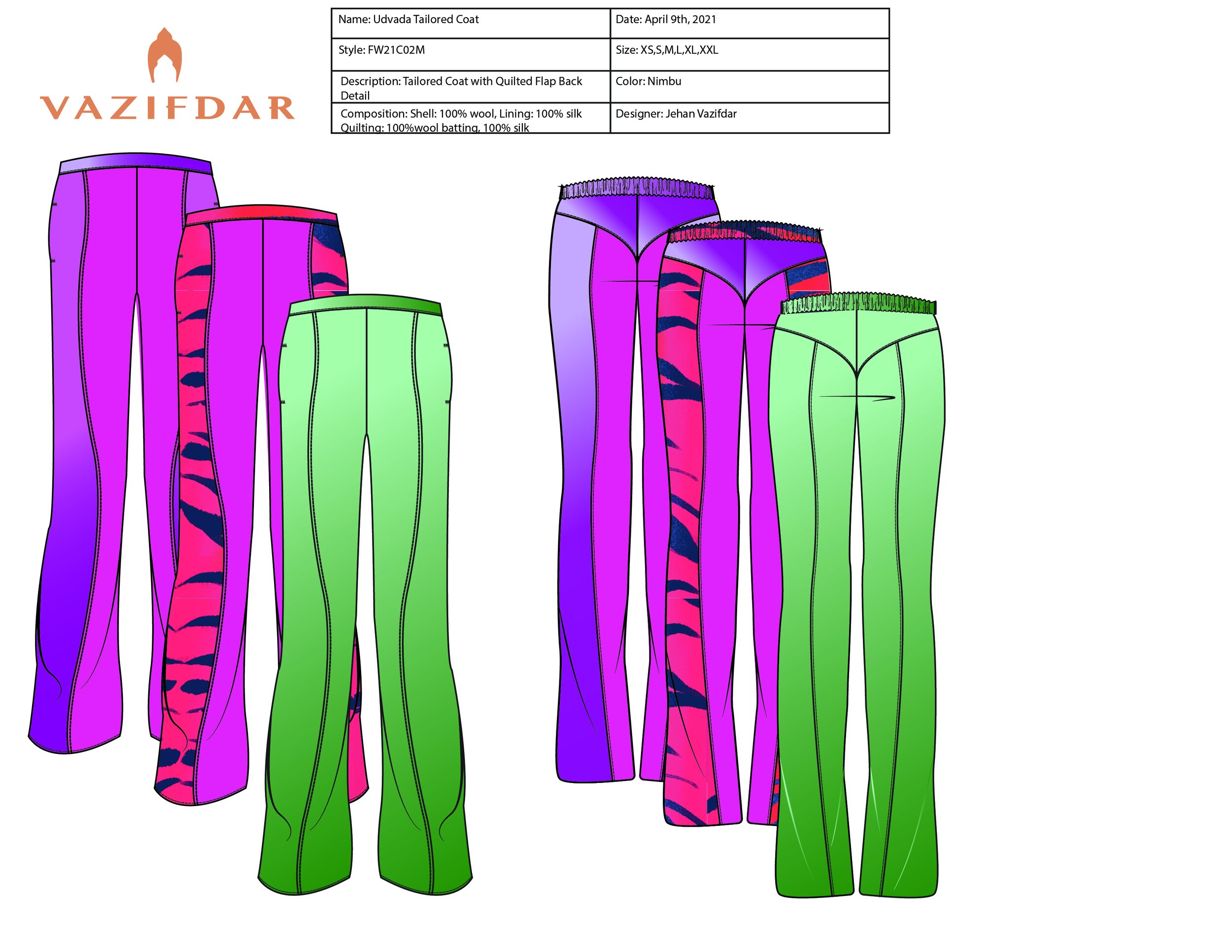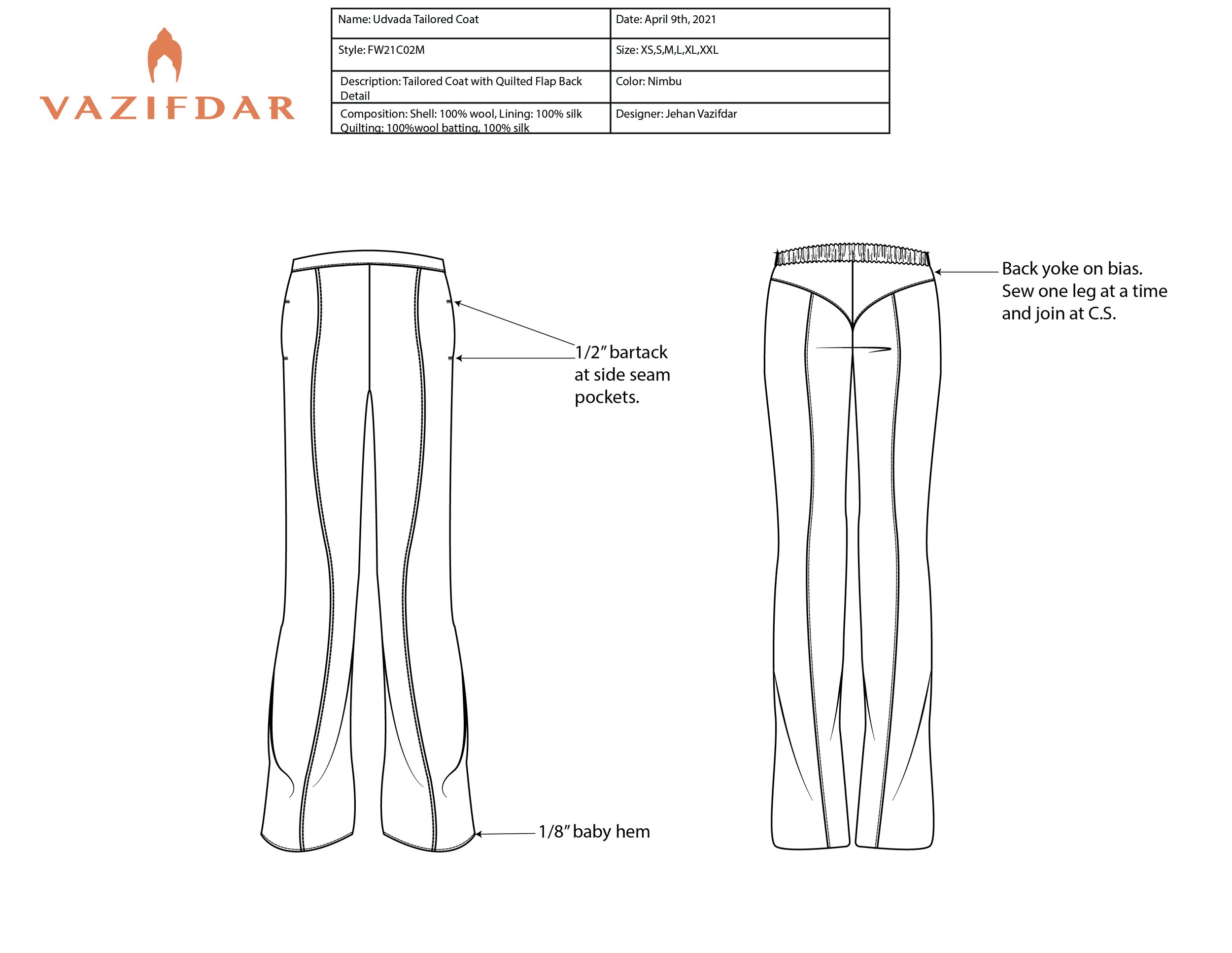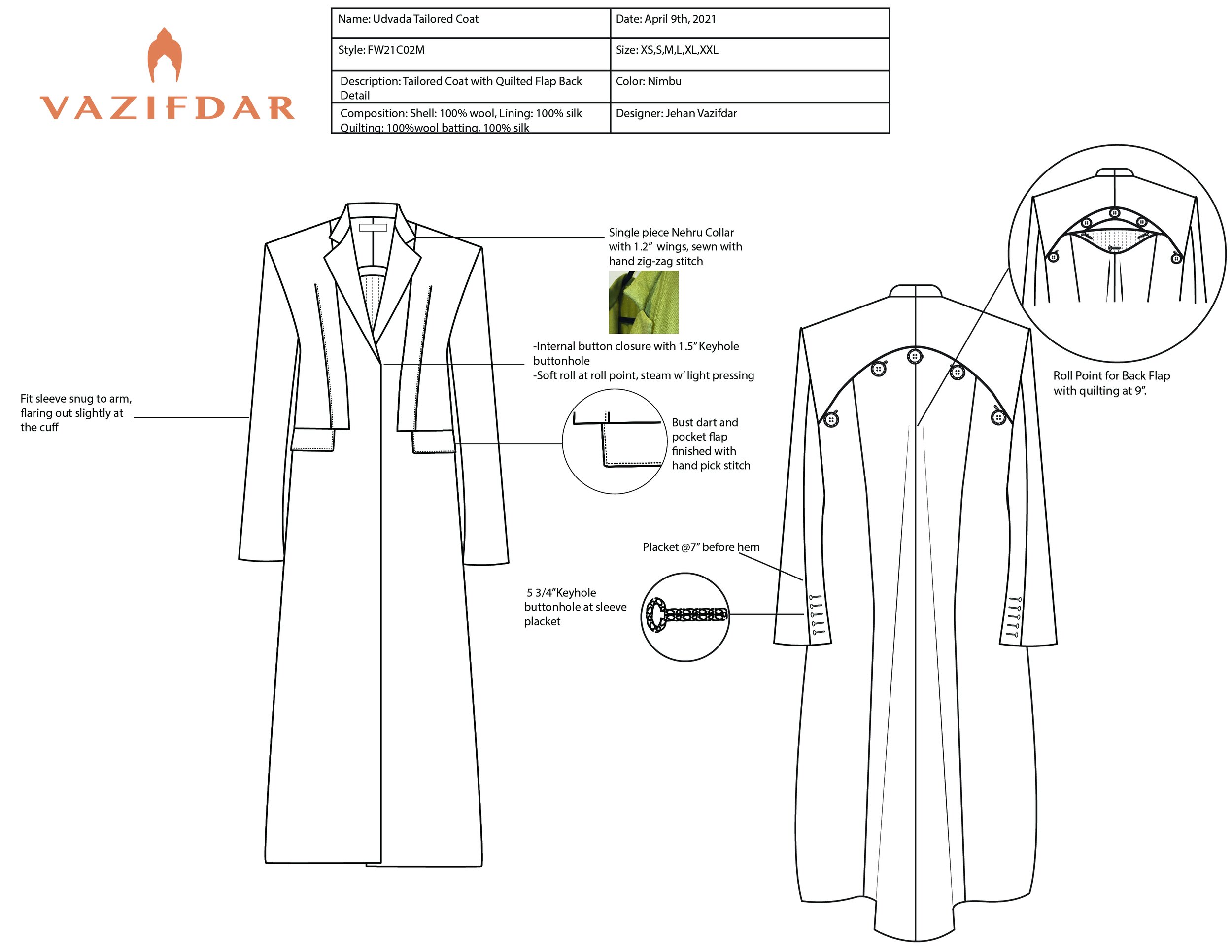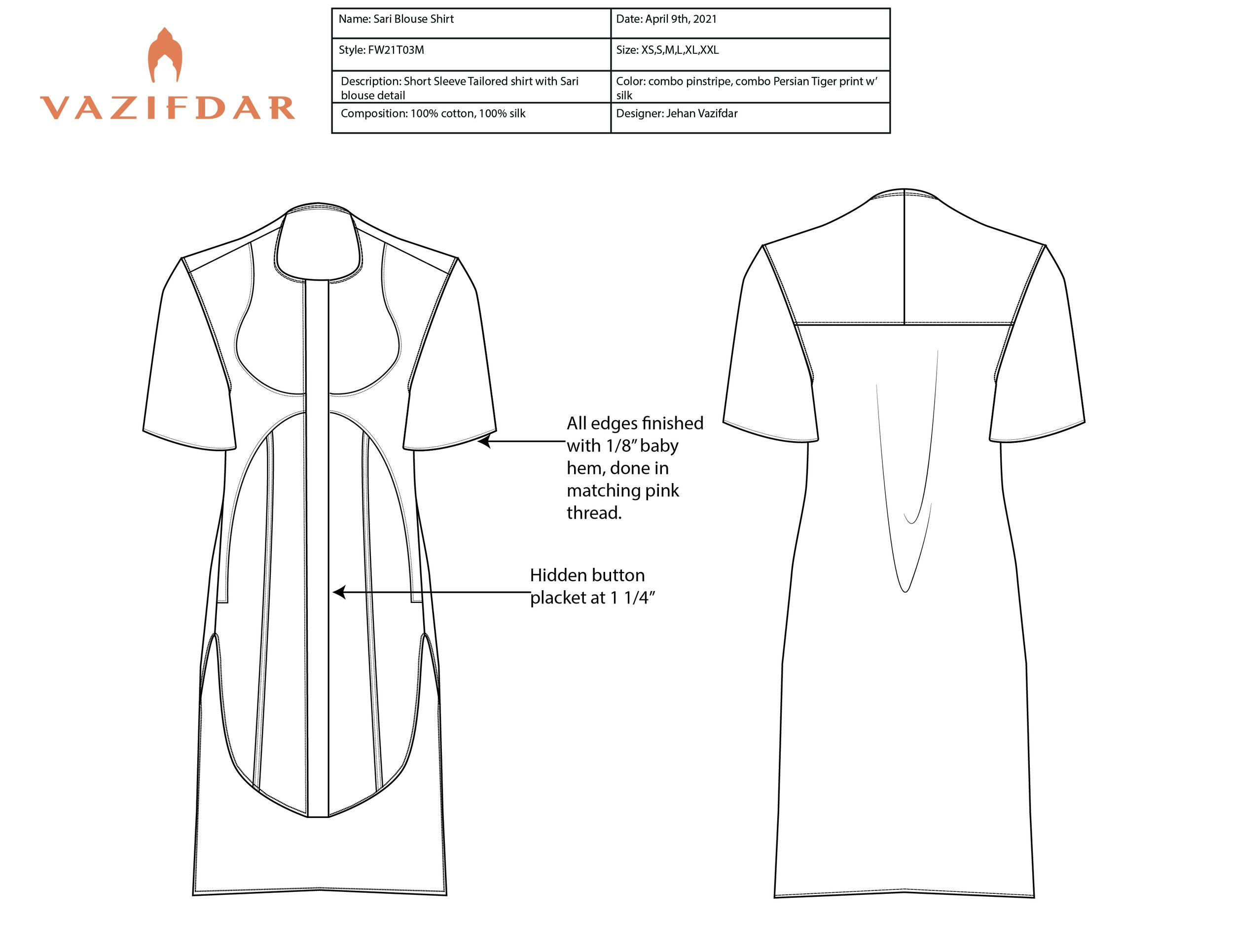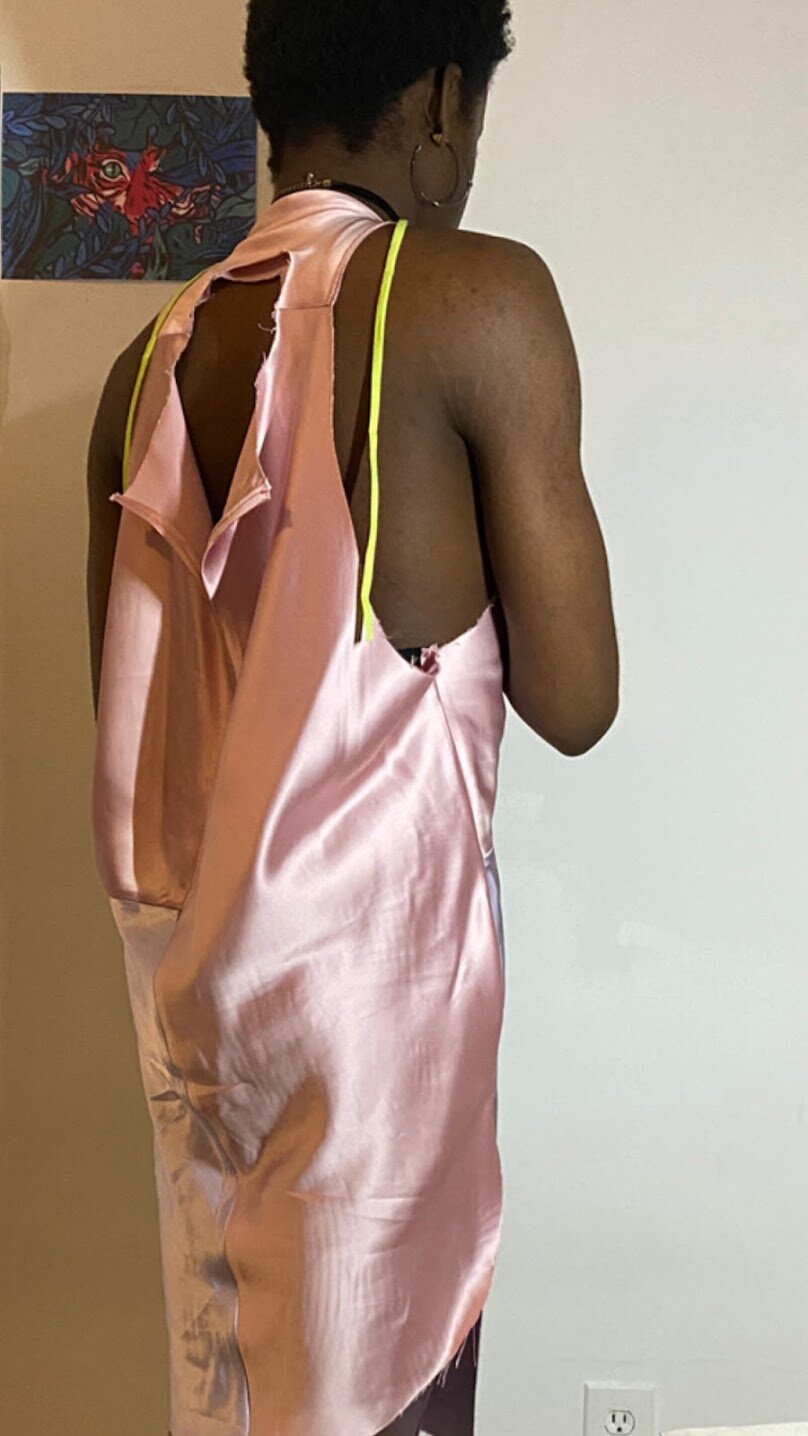
Anglo Saxon Persian Garden
Parsons Fashion BFA Thesis 2021
Photos by Aidan Doyle
Models: Aasia Detrois, Christopher Chu, Elliot Bohlen and Tara Anand

Exploring transformative elements help the wearer adjust the garment to their body, lending a metamorphic feel. Quilted silks and saris in bright colors can be detached or hidden, straps at the shoulder-blades and waist change the fit discreetly from the back.
A tiger stripe, a classic, Indian trope, is reworked in the colors of the illustrated manuscripts, the shape of marble tile offcuts morph into jewelry.
Dead-stock tailoring fabrics, Chanderi silk custom dyed in Mumbai and excess finishings build a vibrant and sustainable collection of laboriously worked garments, bringing the characters from the illustrations into the 2020s.
A forward-thinking interpretation of Zoroastrian clothing through Ancient Persia to India and through colonization.
Colors and silhouettes depicted in the Shahnameh are filtered through hundreds of years of a culture adapting to changes from assimilation into Indian culture to the infiltration of colonized aesthetics.
Historic and contemporary Parsi dress details are worked into fluid daywear and bespoke tailoring. Crossover collars are pad stitched, Mughal coat silhouettes are worked into coats.
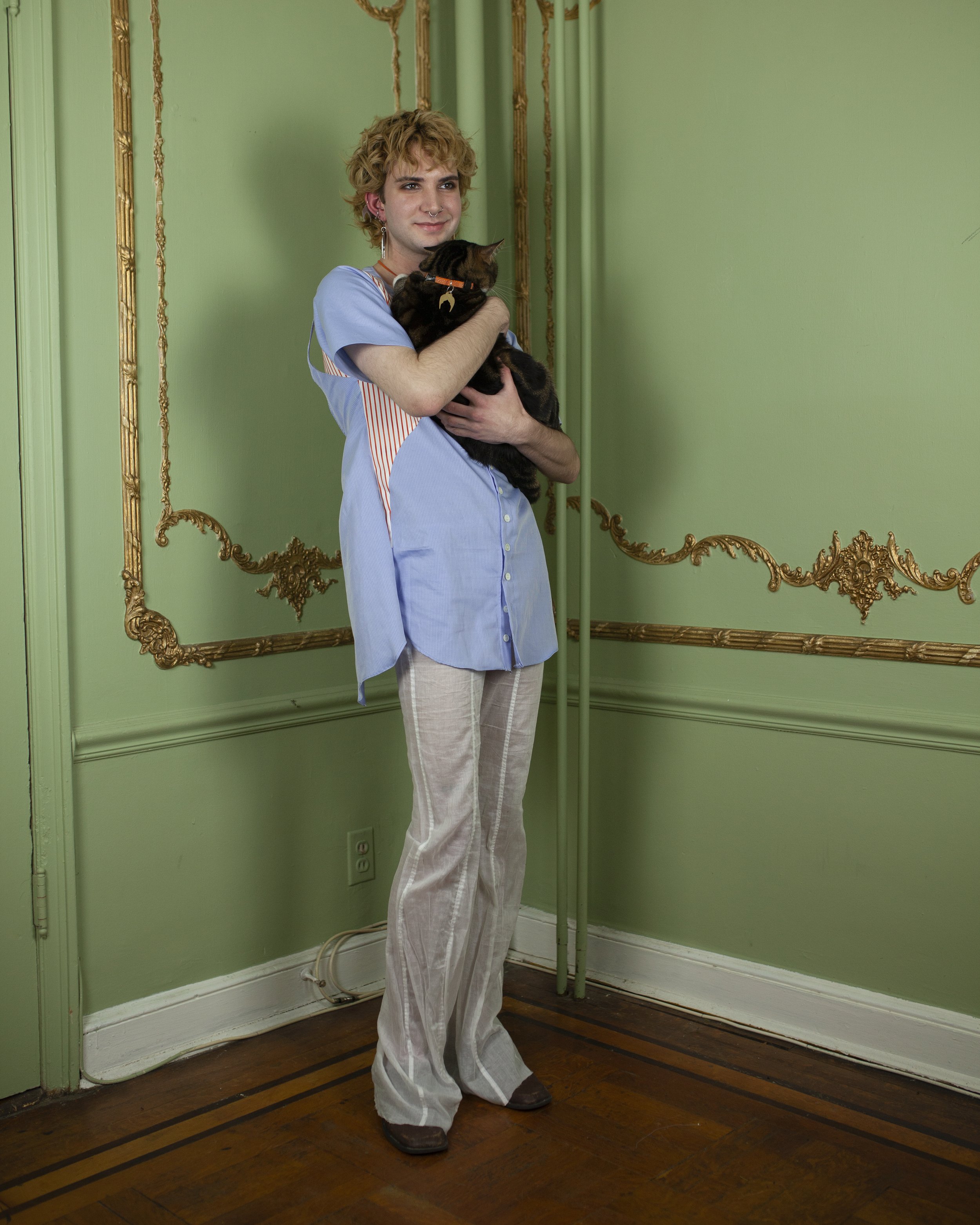

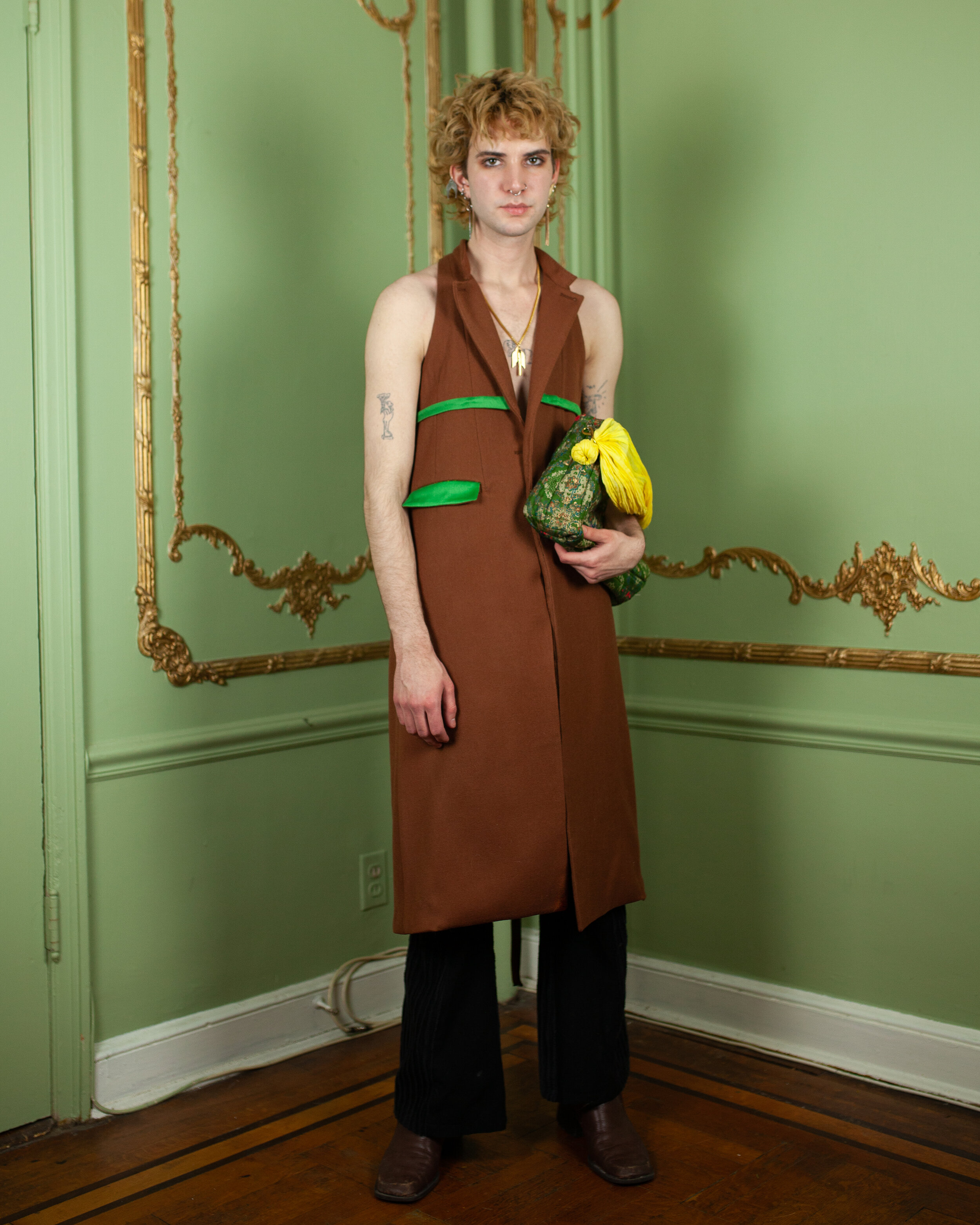
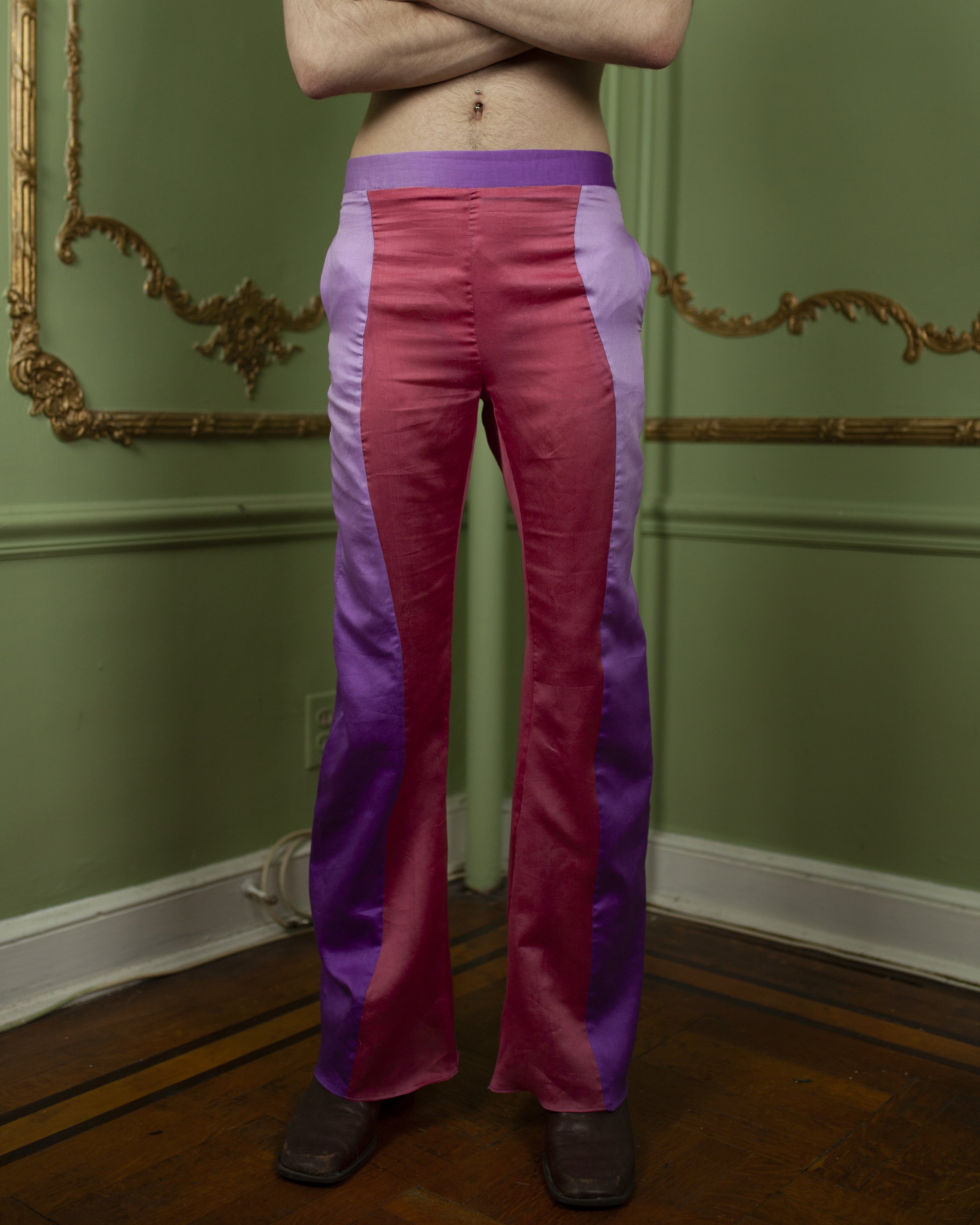

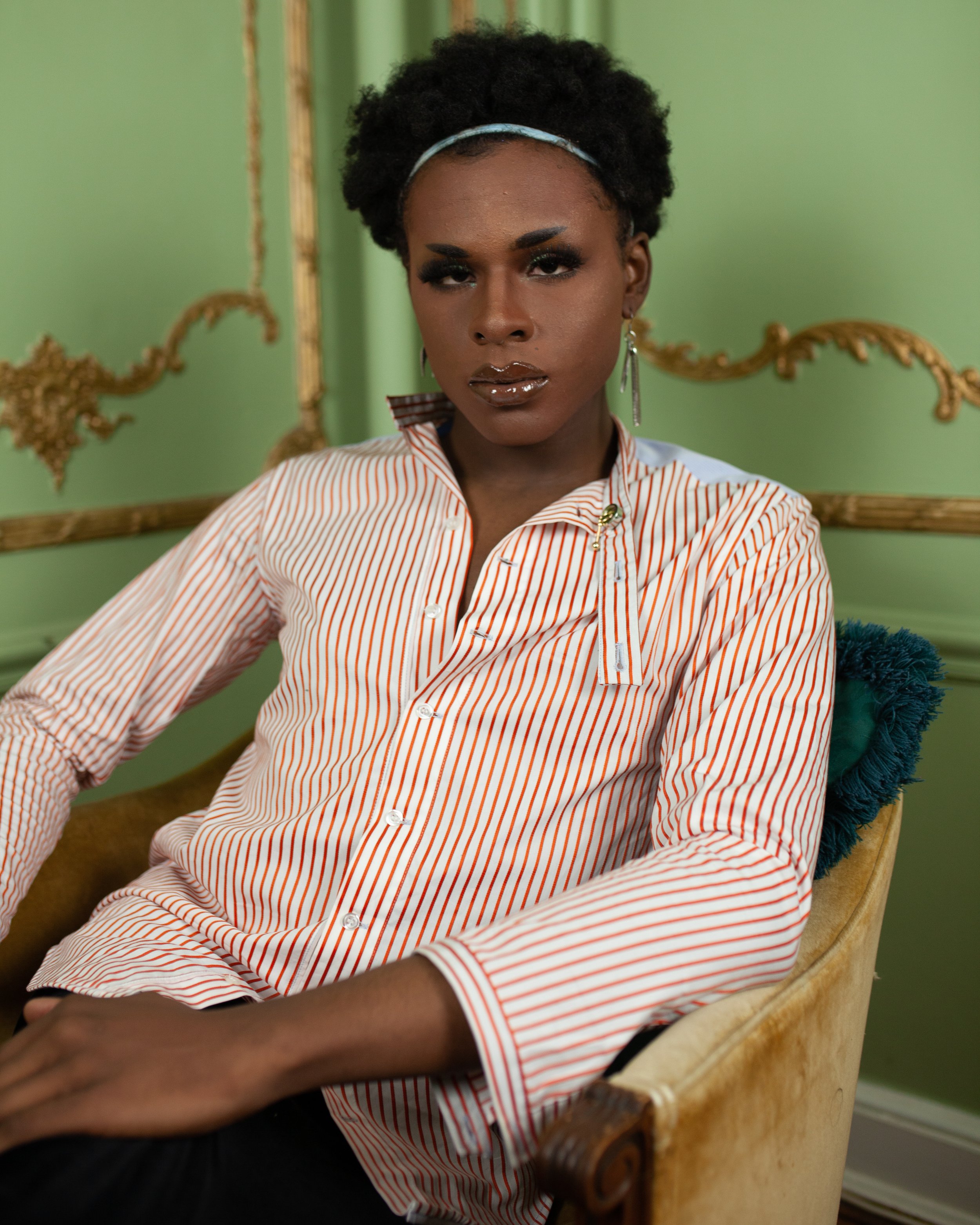

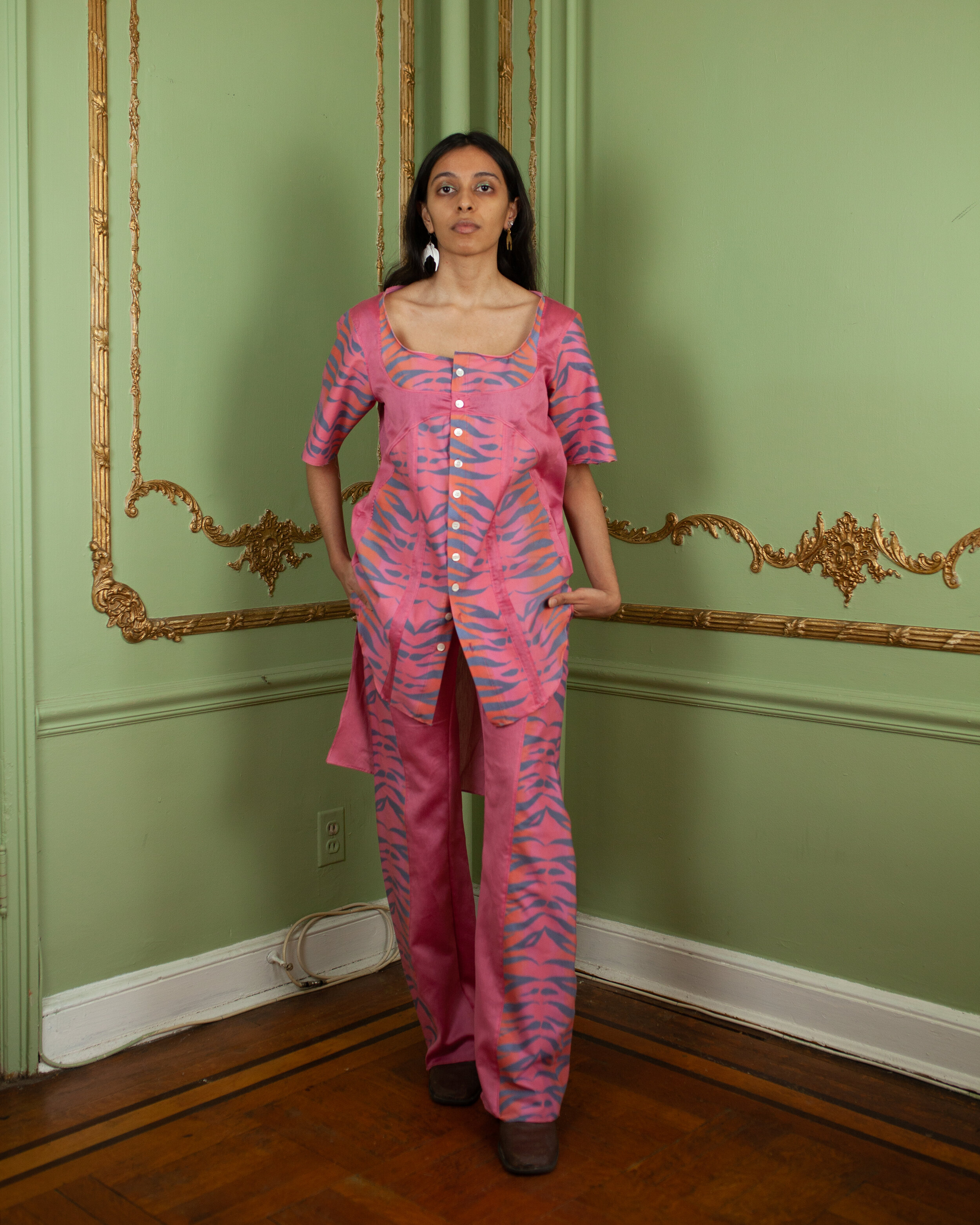
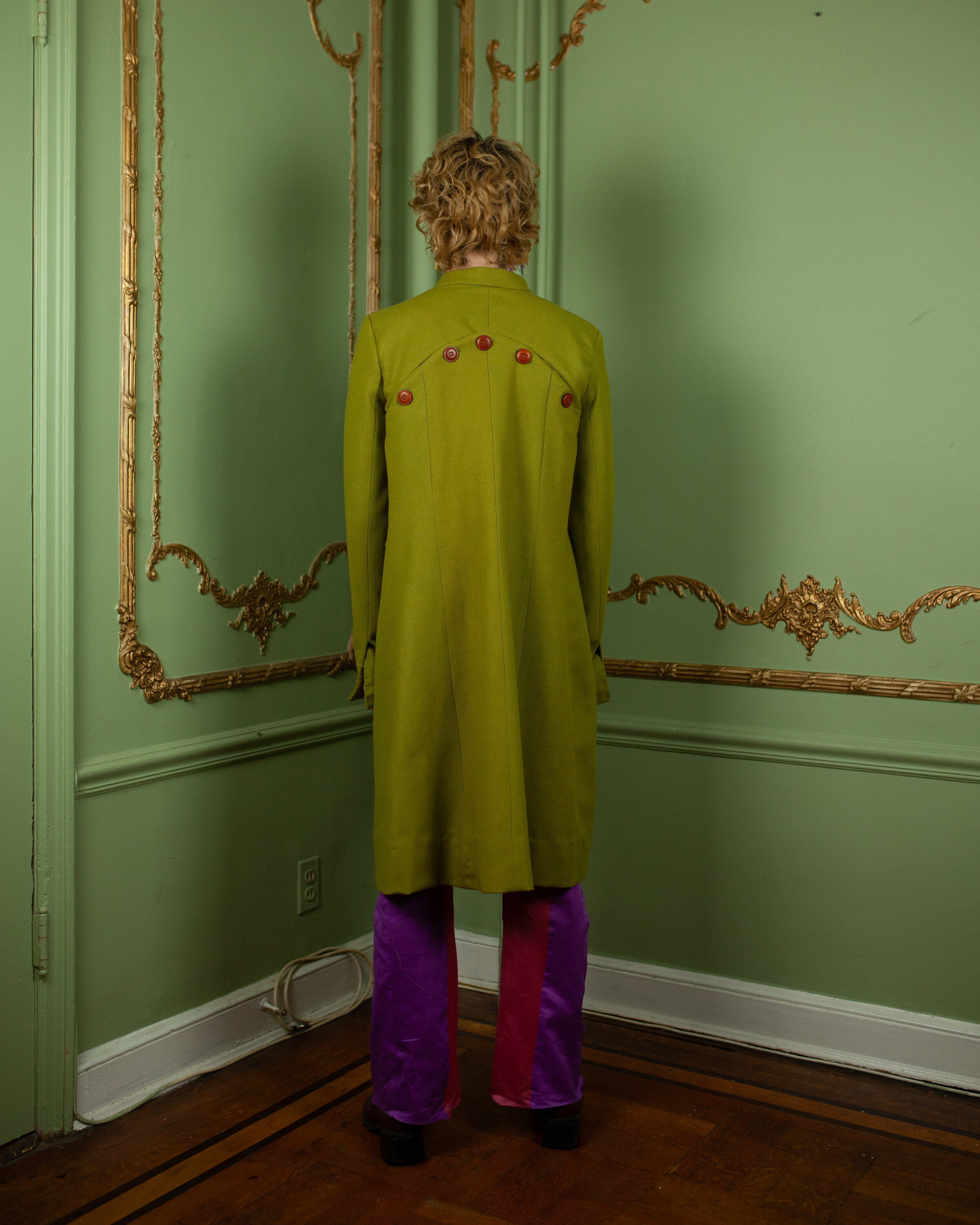
The pattern making process for this collection was dictated by the mission of inclusive tailoring. Displacing gendered seams, darting around the body, to result in form created by right angle seams. High vents with back ties allowed for these garments to fit a range of bodies and flexible with sizing.
The way a tailored garment fits is a very gendered idea and I wanted to stray away from that, creating tailoring with trans people like myself in mind, away from traditional ideas while upholding craft and quality.
A pajama is refreshed by way of Jimi Hendrix and Tarsem. The soft bottom to an ornate top, the norm for formal dress in India. An elastic back waistband ensures a snug fit.
This collection tracks the clothing of one of the oldest religions in the world with a modernist eye and a queered mindset. Although inspired by the techniques and principles of menswear, these clothes are a true reflection of what I hope is a new queer, Indian identity.
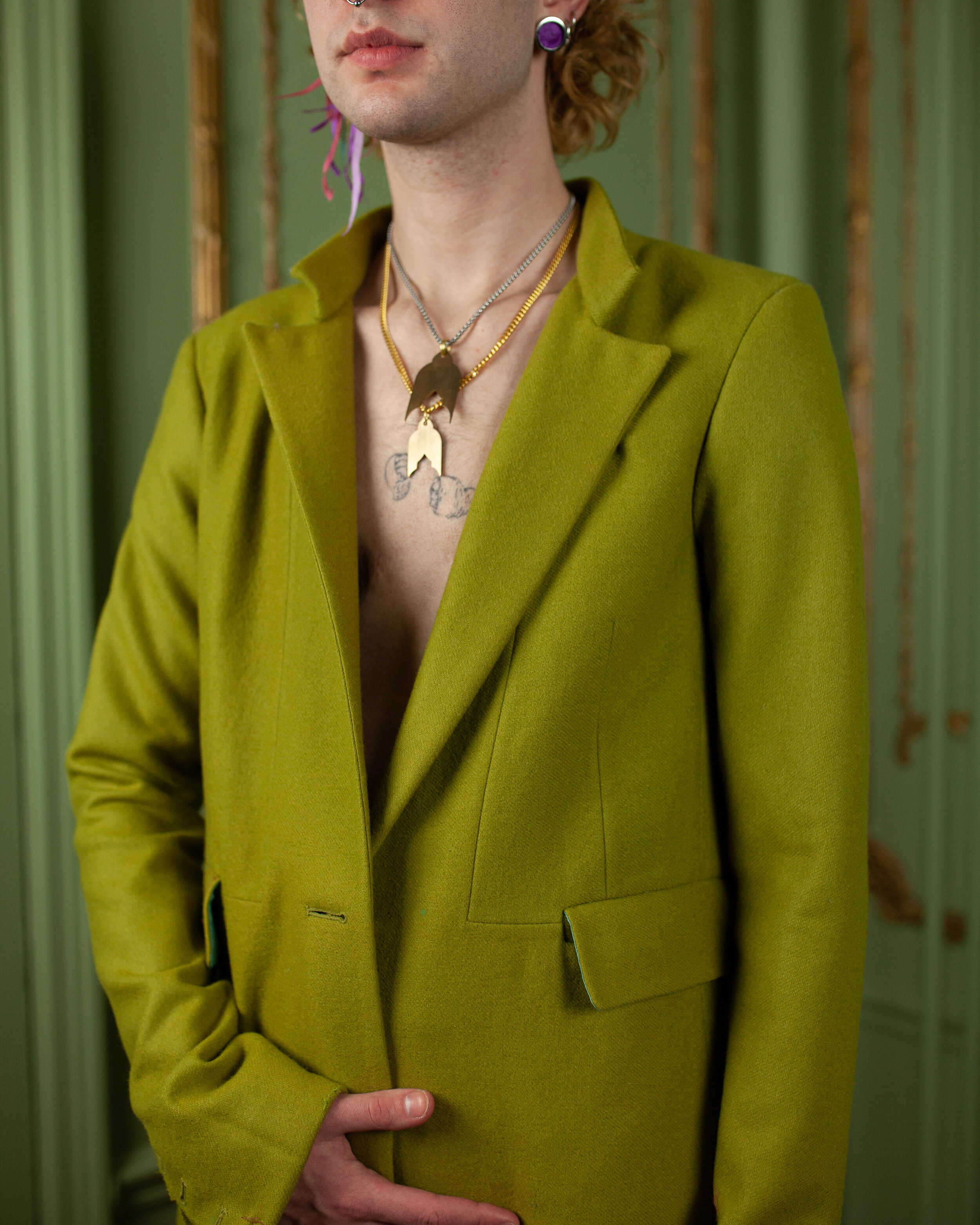

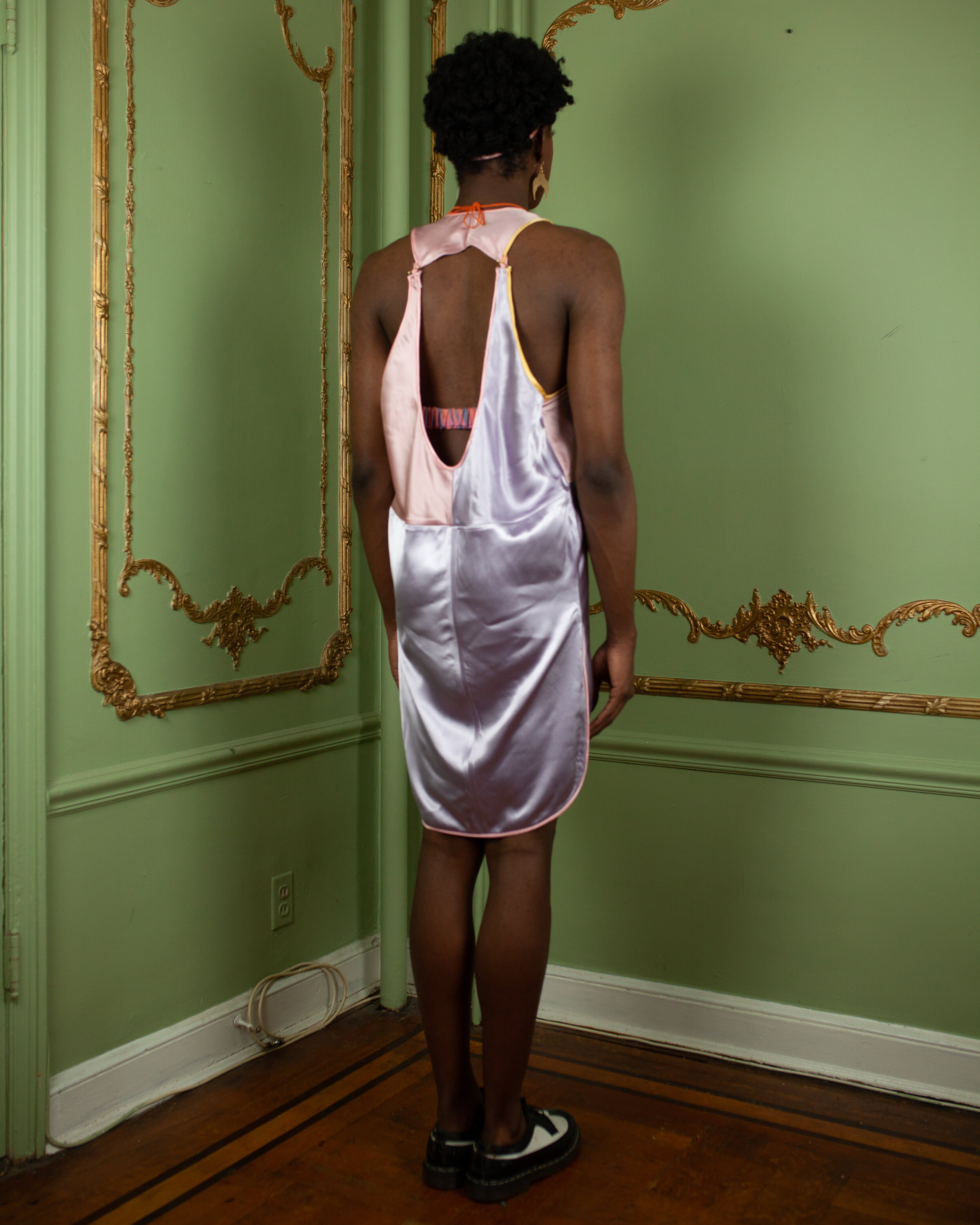

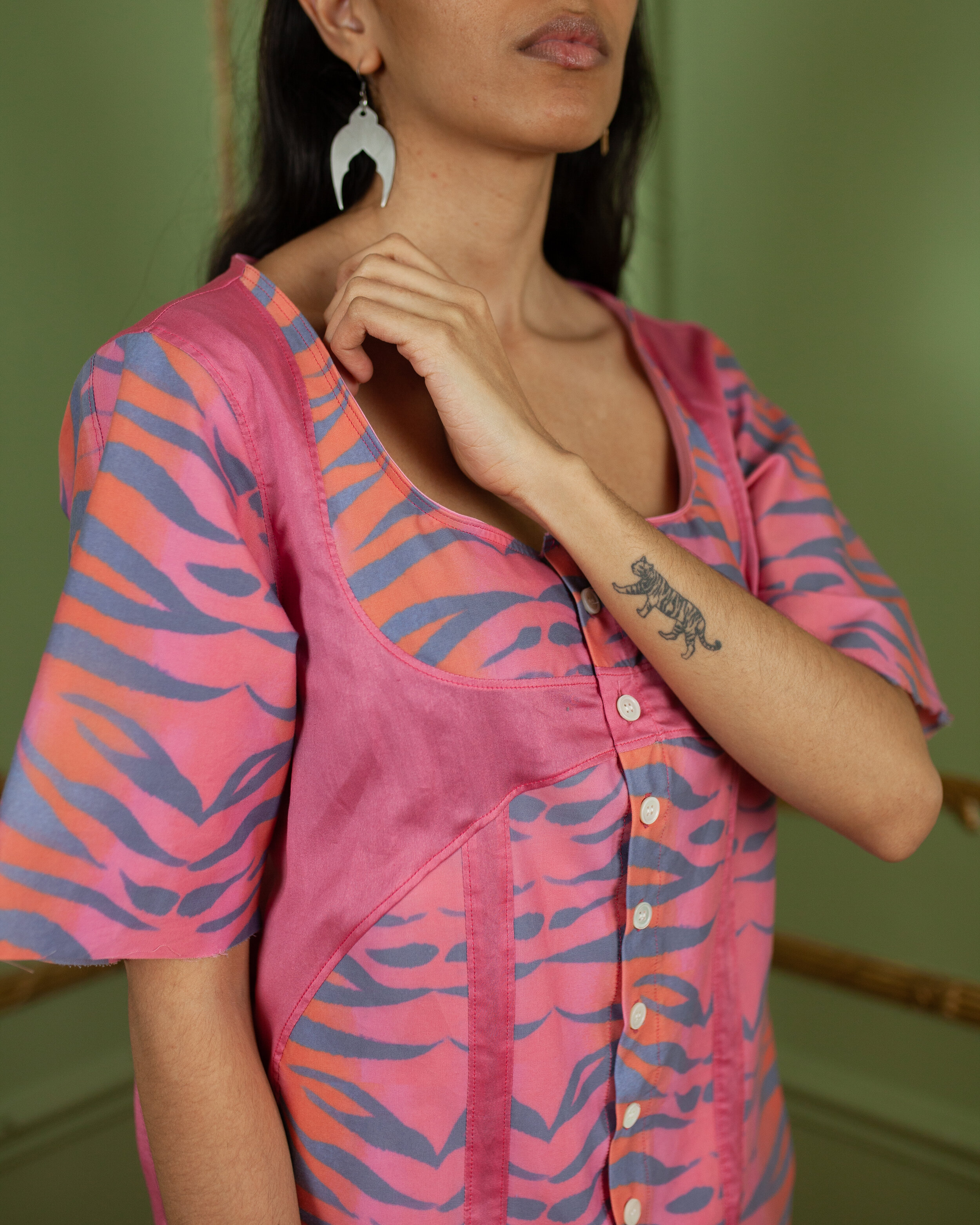

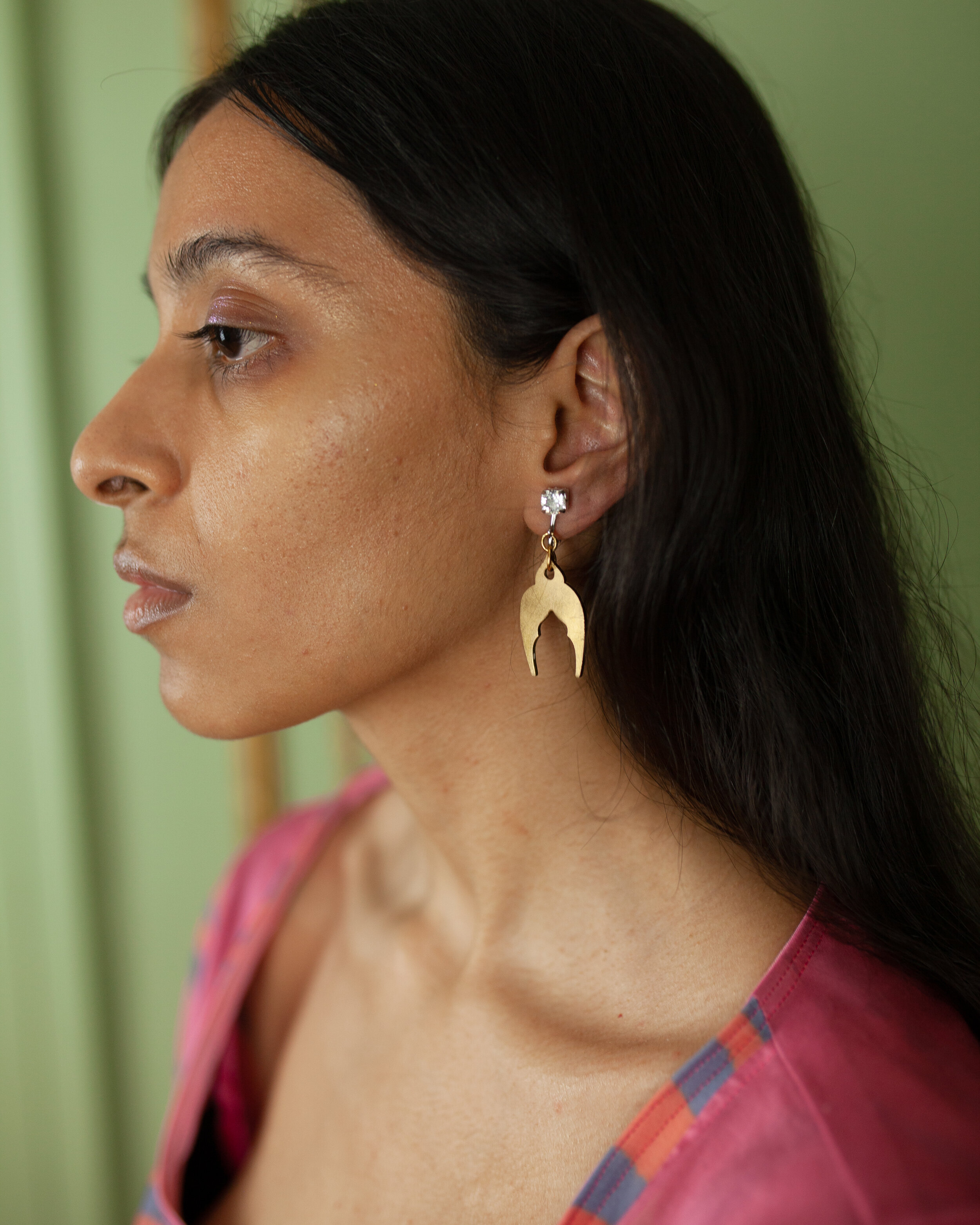


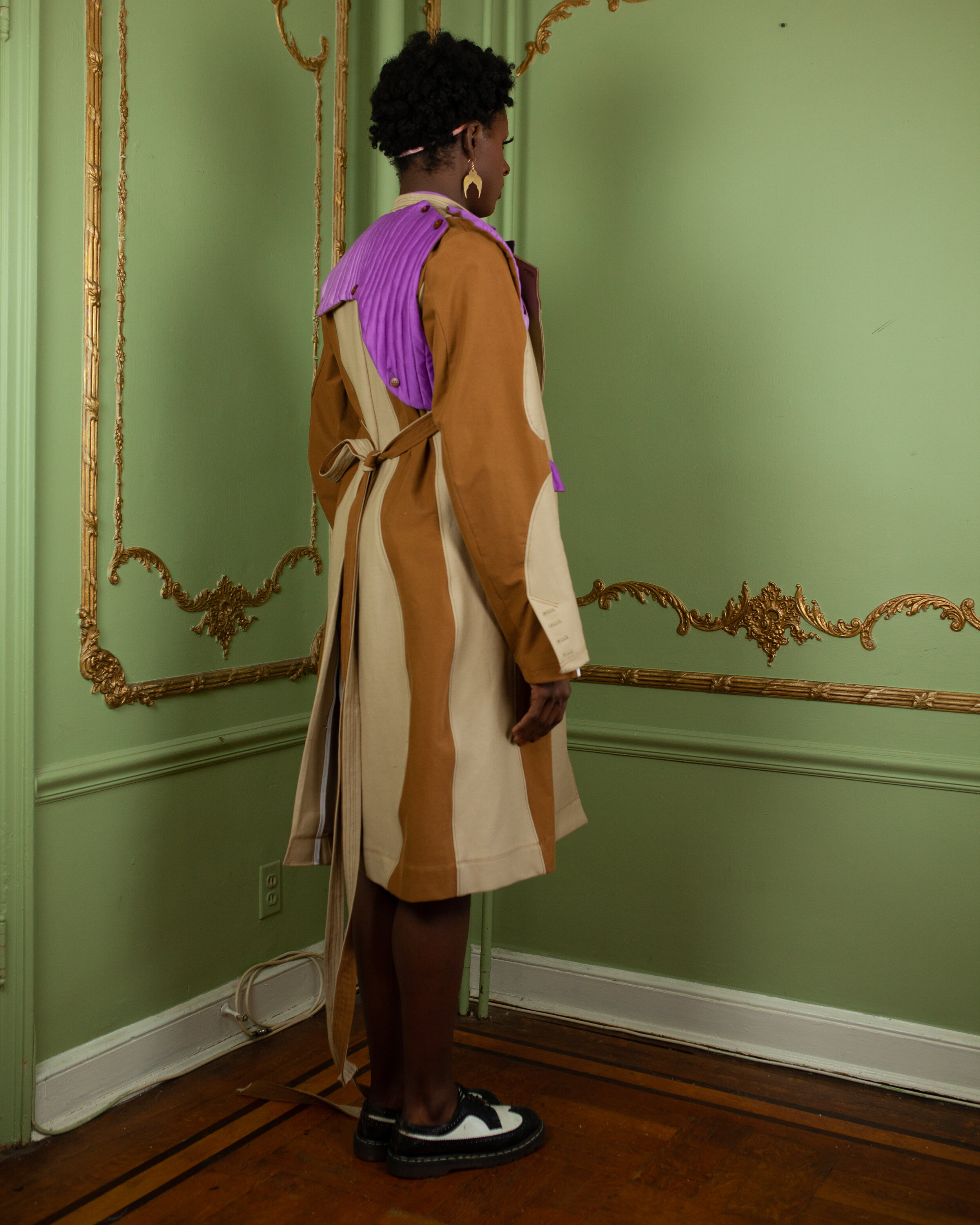




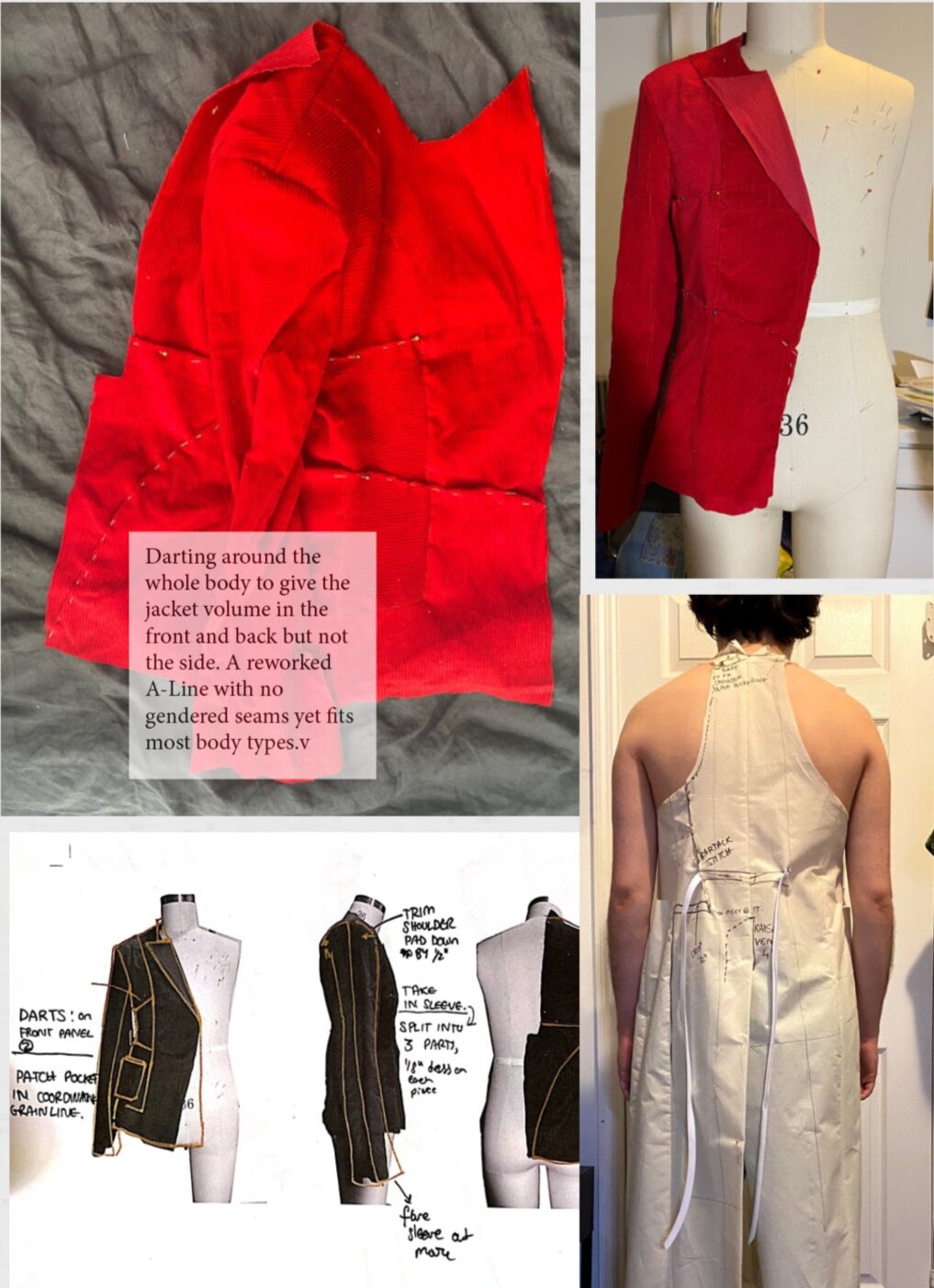
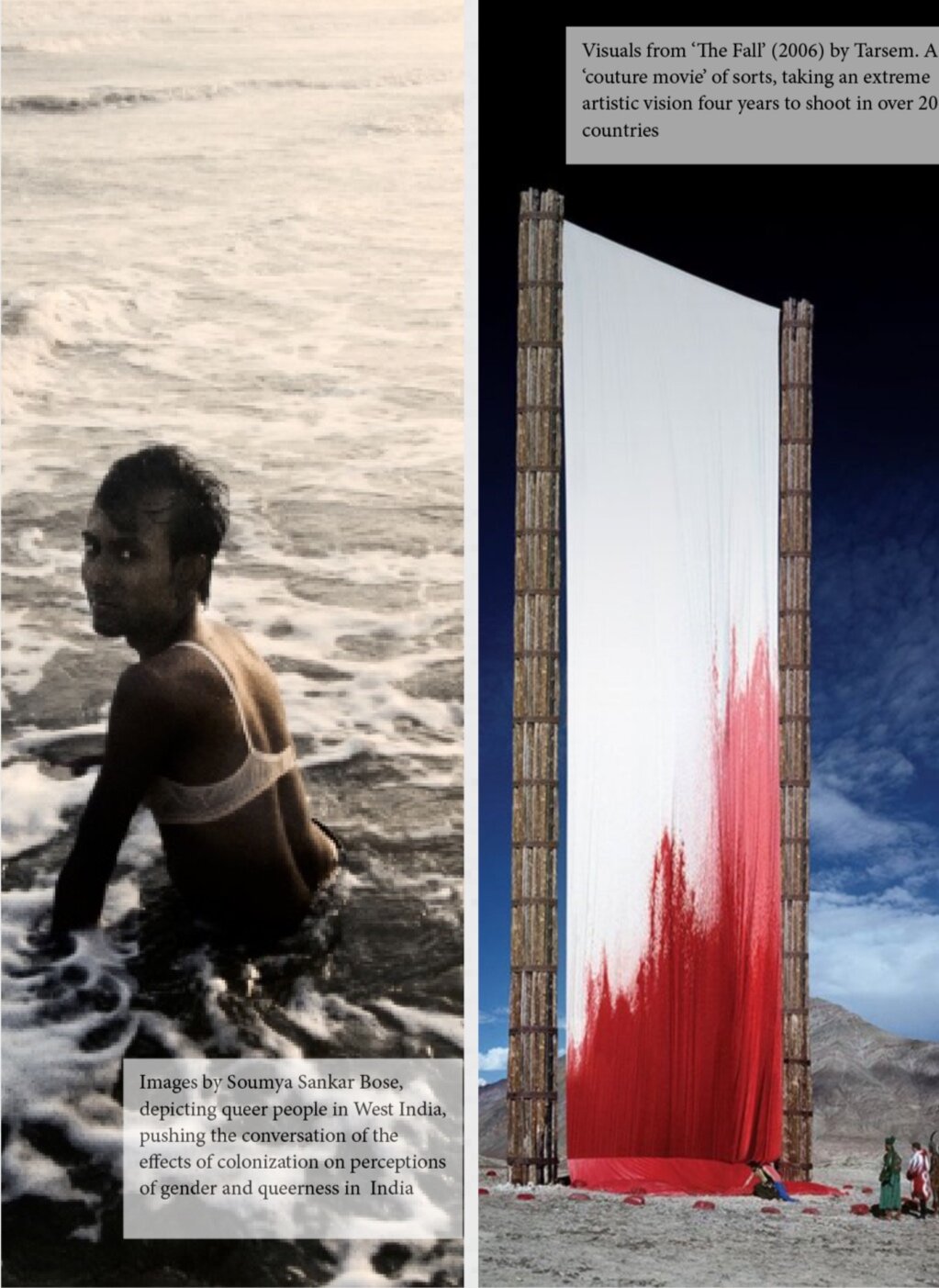
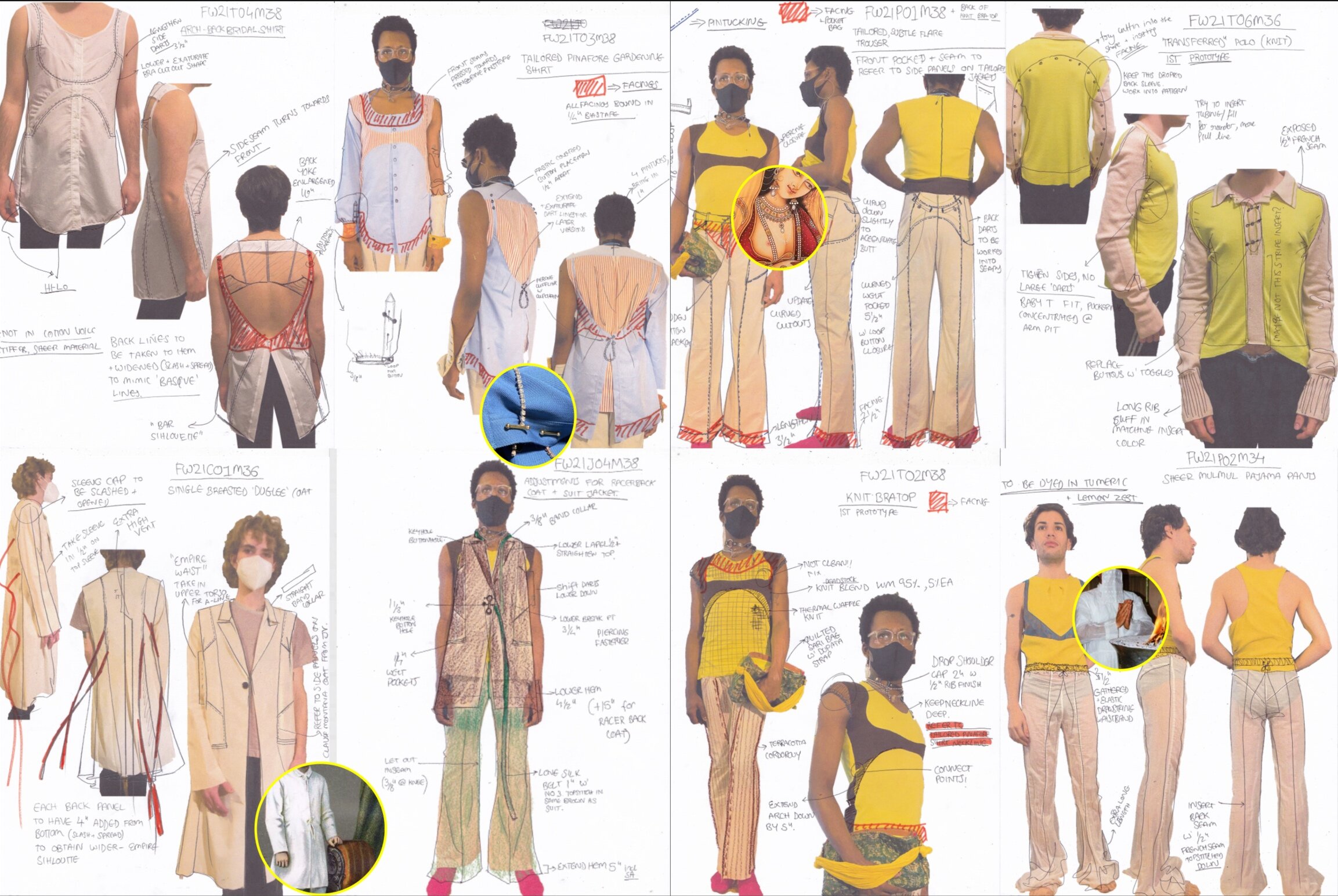


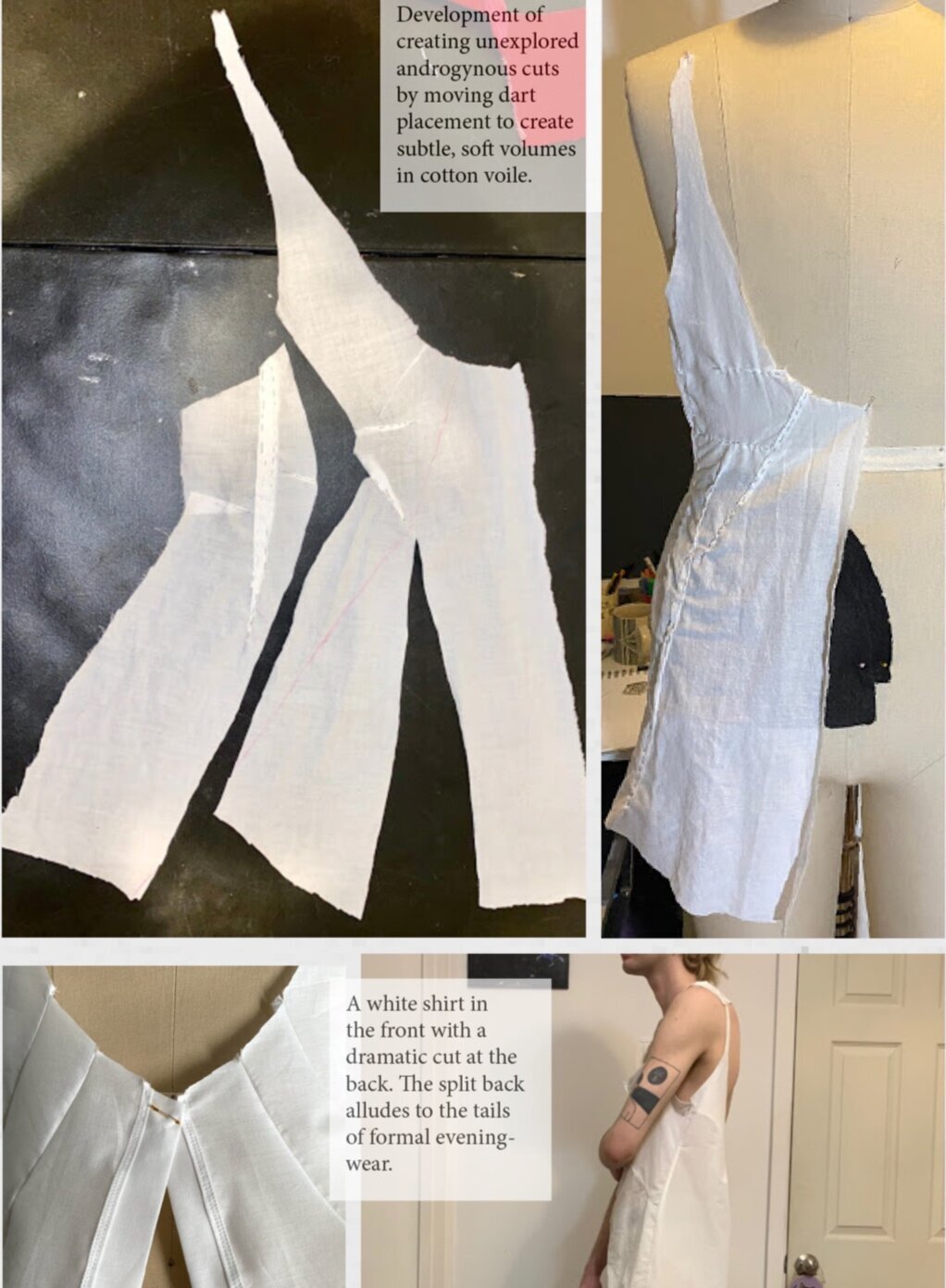
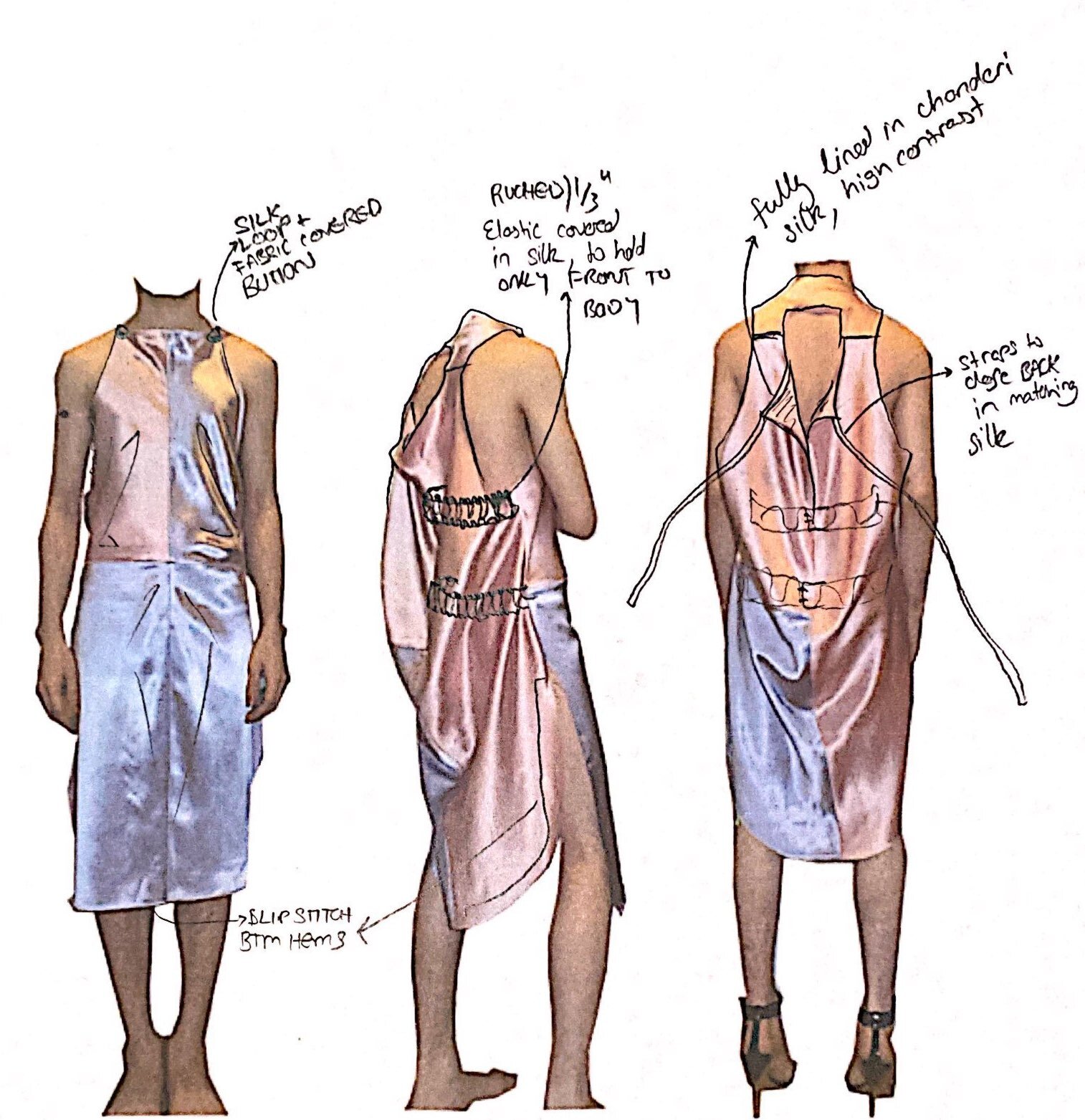


DETAILS
Udvada Tailored Evening Coat
An open panel reveals a hand painted and quilted sari that belonged to my grandmother from 1964, an act of preservation and protection.
Back panels are hand interfaced with bias cut siri to allow for a soft structure.
Bust darts and princess seams combine to form a right angle seam, a departure from indications of gender. These seams are used for shaping around and away from the body.
Cyrus Quilted Trench Coat
Winding seams are reminiscent of the curved tile offcuts from the marble floors in construction at the Udvada fire temple.
Curved panels in saturated proportions are able to be manipulated with what would become a 20 foot long collar stand functioning as a belt.
The bra shape from sweaters and shirts are applied to the large trench coat sleeves, furthering the signature motif.
Bias Silk Pinafore
Made from the salvaged yardage of bias gown samples. The pattern pieces were cut to accommodate the irregular sizes and seams of the fabric. The blended fabric would not have been recycled, around 5 large cuttings were used.
Spare silk ribbon and spare silk was used to bind the seams and edges. A firm 1/4” binding provided strength and a clean finish. An elastic band attached to the side seams allows the front to be drawn tight while allowing the back to drape away from the body.
Bias cut pattern pieces were hung on the form and tacked together through fittings and sewn a couple of nights before the photoshoot to allow the bias to mould as much as possible.
Persian Tiger Print with Tara Anand
Digital sublimation print done with Not Just Lace in Long Island City. Several tests and adjustments were made to make sure that the correct size and saturation was achieved.
The colors were matched to the custom shade of Chanderi silk, French seamed and topstitched down to stabilize curves and add definition to the overall look.
Tara and her family have always gone to tiger conservation parks her whole life. She has a long running series of blue and orange tigers. This was our take on a classic Indian motif.
Persian Tile and Offcuts Jewelry with Jehan Vakharia
Done with my childhood friend, The idea originally started off as a pattern for a houndstooth that later turned into a jewelry component and logo.
Sketches were made and illustrator files with measurements sent out to a small metal workshop in Mumbai to be hand cut from scrap metal that was left over from other large projects.
Final jewelry finished with luxe metal rope, champagne metal tassels and recovered chains from old jewelry.

Technical Flats
